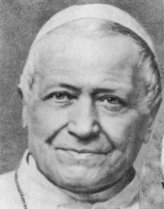|
 German Epilepsy Museum Kork www.epilepsiemuseum.de |
No other successor of St Peter has worn the Roman triple crown for as long as Giovanni Maria Conte Mastai-Ferretti, who ascended to the papal throne as Pope Pious IX in 1846. Pope Pious' pontificate was notable not only for its length, but also for the decisions the pope made which were to have a significant effect on the future, for instance the defence of the sovereignty of the papal state during the Italian war of independence, the convening of the first Vatican Council, the dogma of papal infallibility, and the completion of various concordats. In his youth, Pious IX had a sickly constitution and suffered epileptic seizures. |

 In 1895, the 23-year-old Count Mastai-Ferretti requested to be accepted in the papal guard. However, because he had epilepsy, his name was removed from the list of candidates.
In 1895, the 23-year-old Count Mastai-Ferretti requested to be accepted in the papal guard. However, because he had epilepsy, his name was removed from the list of candidates.

